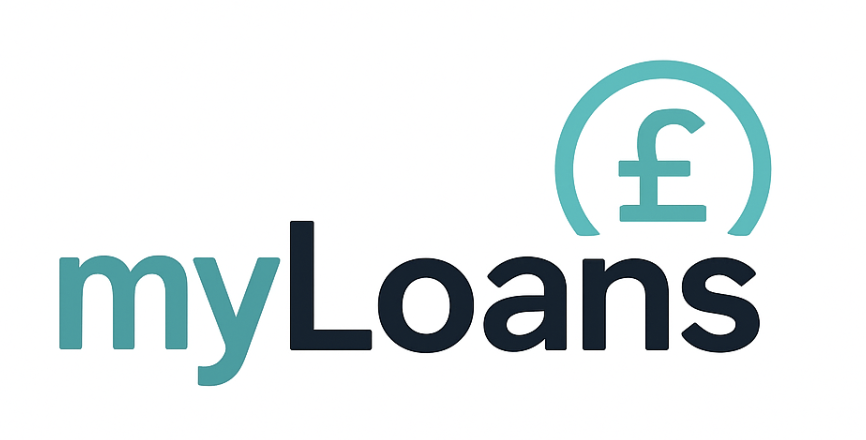Table of Contents
Introduction: Why Green Energy Loans Are Growing
With energy prices still volatile and the UK pushing toward net zero by 2050, more households are investing in eco-friendly home improvements. Solar panels, heat pumps, insulation, and EV chargers don’t just lower bills — they boost property value and reduce carbon footprints.
But these upgrades require substantial upfront investment, often running into the thousands. For many, a green energy loan provides the solution, spreading costs into manageable monthly payments.
This guide explains everything you need to know about green energy loans in the UK in 2025: how they work, available lenders, costs, pros and cons, and alternatives like grants.
What Is a Green Energy Loan?
A green energy loan is a type of personal loan used for eco-friendly home improvements, such as:
-
Installing solar panels or battery storage
-
Adding loft, wall, or floor insulation
-
Replacing old boilers with heat pumps
-
Installing double or triple glazing
-
Buying and fitting an EV charging point
Some lenders market them specifically as “green loans”, while others allow standard personal loans to be used for this purpose.
How Do Green Energy Loans Work?
-
Application – With a bank, online lender, credit union, or specialist provider.
-
Approval – Based on your credit score, income, and affordability.
-
Funding – Paid to your account, or directly to installer.
-
Repayments – Fixed instalments over 1–10 years depending on amount.
Example:
-
£8,000 loan for solar panels at 7.9% APR over 5 years
-
~£162/month, total repayable ~£9,720
Typical Costs of Eco-Friendly Upgrades
-
Solar panels + battery: £6,000–£10,000
-
Air source heat pump: £7,000–£12,000
-
Insulation (whole house): £2,000–£5,000
-
EV home charger: £800–£1,500
-
Double glazing: £3,000–£7,000+
Who Offers Green Energy Loans in the UK?
-
High Street Banks: Some offer eco-loan products with preferential rates (e.g., Barclays Green Loan).
-
Online Lenders: Zopa, Lendable, Admiral — standard personal loans usable for eco upgrades.
-
Credit Unions: Often support local sustainability projects.
-
Government-backed Schemes: e.g., Green Homes Grant (limited in 2025, but local council schemes exist).
Pros and Cons of Green Energy Loans
Pros
-
Access eco-upgrades without full upfront cost
-
Fixed repayments make budgeting simple
-
Some banks offer lower “green” rates
-
Potential savings on energy bills offset loan costs
-
Increases property value
Cons
-
Adds debt — repayments may outweigh savings at first
-
Rates vary — bad credit means higher APRs
-
Government grants are limited, not guaranteed
-
Technology may become outdated before loan ends
Alternatives to Green Energy Loans
-
Government schemes: Local council eco-funding, Boiler Upgrade Scheme (£7,500 toward heat pumps).
-
0% credit cards: For smaller installations, repay within promo period.
-
Remortgaging: Release equity at mortgage rates (risk: longer-term debt).
-
Savings: Cheapest way to fund upgrades.
-
Supplier finance: Some installers partner with lenders to offer 0% deals.
Worked Examples
Example 1 – Solar Panels (£6,500)
-
Loan at 7.9% APR over 5 years = ~£131/month
-
Total repayable ~£7,860
-
Estimated bill savings: £400–£600/year → break-even in ~7–8 years
Example 2 – Heat Pump (£10,000, less £7,500 grant)
-
Net cost £2,500
-
Loan £2,500 at 9.9% APR over 3 years = ~£80/month
-
Total repayable ~£2,880
Example 3 – EV Charger (£1,000)
-
0% credit card, 12-month repayment = £83/month, no interest
How to Choose the Right Loan
-
Compare APRs — green loans may offer preferential rates.
-
Check total repayable, not just monthly instalments.
-
Match term to product life — don’t borrow 10 years for tech that may last 7.
-
See if grants reduce your need to borrow.
-
Look for early repayment options to clear faster.
FAQs
Q: Can I get a green energy loan with bad credit?
Yes — but APRs may be higher. Credit unions are a safer option than payday lenders.
Q: Do green loans really offer lower rates?
Some banks do, but not always — compare with standard loans.
Q: Are eco-upgrades worth it financially?
Yes, long-term — especially solar panels, insulation, and EV chargers. Savings vary by household usage.
Q: Can landlords get green loans?
Yes — many lenders allow loans for rental property upgrades, especially with new EPC rules.
Conclusion: Go Green, Borrow Smart
A green energy loan can unlock eco-friendly upgrades that cut bills, increase property value, and support the UK’s sustainability goals. For households without savings, they provide a practical way to invest in solar, insulation, or heat pumps now rather than years down the line.
But as with any borrowing, success lies in borrowing only what you can afford, comparing multiple lenders, and exploring grants first. If managed carefully, a green loan can pay for itself in both financial savings and environmental benefits.
Personal Loan Debt Consolidation UK – Is It Right for You?
Juggling multiple credit cards, overdrafts, or loans can be stressful and expensive. A debt consolidation loan allows you to combine everything into a single monthly repayment, often at a lower interest rate. In 2025, UK lenders from high street banks to online...
Emergency Loans UK – How to Borrow Fast in 2025
When an urgent expense hits — like car repairs, medical bills, or a broken boiler — quick access to funds can be essential. In 2025, emergency loans in the UK provide a way to borrow fast, with some lenders offering same-day decisions and payouts. This guide explains...
Top 10 Personal Loan Providers UK 2025 – Rates, Features & Eligibility
The UK personal loan market in 2025 offers more choice than ever, with banks, supermarkets, online lenders, and credit unions all competing for borrowers. The best deal for you depends on your credit score, loan size, and repayment term — but comparing providers side...
Best Debt Consolidation Loans UK 2025 | Top Options
Managing multiple debts can feel overwhelming, especially with credit cards, overdrafts, and personal loans all charging different interest rates. A debt consolidation loan can simplify your finances by rolling everything into one fixed monthly repayment — often at a...
Best Bad Credit Loans UK 2025 – Top Lenders Compared
Having a poor credit score, CCJs, or past defaults doesn’t mean borrowing is out of reach. In 2025, several UK lenders specialise in products designed for people with bad credit — offering smaller loans, flexible repayment terms, and eligibility checks that won’t harm...
Home Repair Loans UK – How to Cover Unexpected Costs in 2025
A leaking roof, broken boiler, or urgent plumbing issue can quickly turn into an expensive problem — often when savings aren’t available. In 2025, home repair loans in the UK provide a way to spread the cost of essential fixes into manageable monthly repayments. This...
Moving House Loans UK – How to Cover Relocation Costs in 2025
From deposits and removal vans to solicitor fees and new furniture, moving house in the UK can quickly add up to thousands of pounds. Not everyone has savings set aside to cover these costs upfront. In 2025, moving house loans in the UK provide a way to spread...
Education Loans UK – How to Fund Studies and Professional Courses in 2025
Not all education in the UK is covered by government student finance. Postgraduate degrees, professional qualifications, and private training often require self-funding — with tuition fees and course costs running into thousands of pounds. In 2025, education loans in...
Holiday Loans UK – How to Spread the Cost of Travel in 2025
Holidays can be some of the most rewarding experiences of the year, but they often come with a price tag that’s hard to cover upfront. From flights and hotels to all-inclusive packages and once-in-a-lifetime trips, the costs can add up quickly. In 2025, holiday loans...
Best Personal Loans UK 2025 – Top Lenders Compared
The UK personal loan market in 2025 is more competitive than ever, with high street banks, supermarkets, online lenders, and credit unions all offering products to suit different needs. Choosing the right provider can save you hundreds in interest and ensure...
Medical Loans UK – How to Finance Healthcare Costs in 2025
While the NHS covers most essential treatment, waiting lists, private care, and specialist procedures mean many people face out-of-pocket medical expenses. From dental work and fertility treatment to cosmetic surgery and urgent private healthcare, costs can run into...
Car Loans UK – Personal Loan vs Hire Purchase vs PCP in 2025
Buying a car in 2025 usually means more than just choosing the right vehicle — it also means deciding how to pay for it. In the UK, the three main options are a personal loan, hire purchase (HP), or personal contract purchase (PCP). Each has its own advantages,...
Home Improvement Loans UK – How to Finance Renovations in 2025
Planning a new kitchen, loft conversion, or energy-efficient upgrade can transform your home’s value and comfort — but the upfront costs are often daunting. In 2025, home improvement loans in the UK provide a way to spread renovation expenses into affordable monthly...
Bad Credit Personal Loans UK 2025 | Complete Borrowing Guide
Defaults, CCJs, or missed payments don’t have to shut you out of borrowing. In 2025, UK lenders still offer options for people with less-than-perfect credit — from credit unions and guarantor providers to online specialists. This guide explains how bad credit personal...
How to Use a Personal Loan Calculator to Plan Your Borrowing
A personal loan calculator is one of the easiest ways to understand what a loan will really cost you. By entering the amount you want to borrow, the interest rate, and the repayment term, you can see your monthly repayments and the total cost over time. This simple...

















